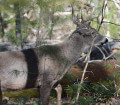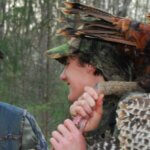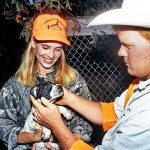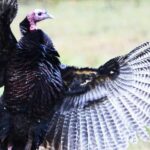John’s Note: Nationally-known deer seminar speaker and avid deer hunter, Ronnie Groom of Panama City, Florida, has faced this problem of how to get a buck within range often in the areas he hunts. He uses these tactics, which work well for bowhunters or gun hunters, to funnel deer into their stand sites.
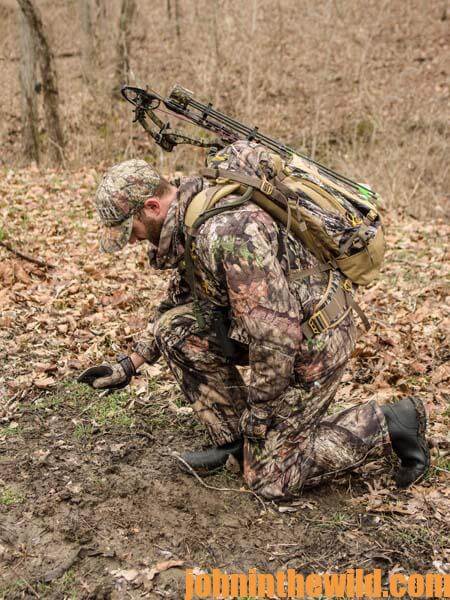 Most bowhunters realize that human scent spooks deer worse than anything in the forest. To be an effective bowhunter, the elimination of human scent is essential. However, Groom utilizes human scent to funnel deer. “You can use human odor to cancel-out areas and cause deer to move into the regions you want to hunt,” Groom observes. “Using human scent to funnel deer is most effective in places of high hunter pressure, because the deer have learned what human odor is and that it represents danger. Therefore the animals will quickly leave an area that has human odor and go to another region.
Most bowhunters realize that human scent spooks deer worse than anything in the forest. To be an effective bowhunter, the elimination of human scent is essential. However, Groom utilizes human scent to funnel deer. “You can use human odor to cancel-out areas and cause deer to move into the regions you want to hunt,” Groom observes. “Using human scent to funnel deer is most effective in places of high hunter pressure, because the deer have learned what human odor is and that it represents danger. Therefore the animals will quickly leave an area that has human odor and go to another region.
“When I was hunting St. Vincent’s Island in Florida, a heavily-hunted public area, I would walk down one side of a ridge and leave a lot of human scent on that particular side of the ridge all the way to the top of the ridge. Then I would go downwind and slip up the other side of the ridge. By my leaving a great deal of human scent on one side of the ridge, when the deer got to that particular point where they smelled human odor, they usually would cross the ridge and walk on the side where I had my stand. Once the deer detected that human odor on one side of the ridge, they generally turned, crossed the ridge and headed for the thickest cover available. The best way to set-up this funneling technique is to know where the thick cover is, lay down the human scent on the opposite side of the ridge from the thick cover and then take a stand close to the thicket. When the deer hit that scent trail, the trail acts like a brick wall, turning the deer, funneling them to the cover.
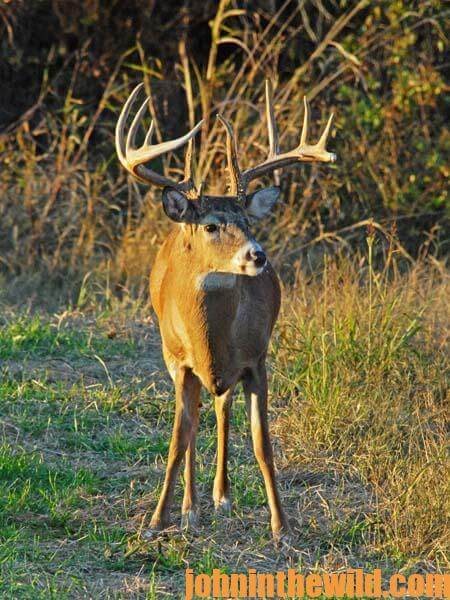 “I’ve found that the best way to leave this scent trail is to go in the day before I plan to hunt and lay down the scent trail by just walking back and forth on one side of the ridge. Then I set-up close to heavy cover and plan to be in that stand at daylight on the following morning. The deer, which generally feed at night in areas of high hunter pressure, will smell that human odor. For the next day or two, they will avoid that particular area, which means they will funnel in toward that thick cover where I’ve set-up my tree stand.”
“I’ve found that the best way to leave this scent trail is to go in the day before I plan to hunt and lay down the scent trail by just walking back and forth on one side of the ridge. Then I set-up close to heavy cover and plan to be in that stand at daylight on the following morning. The deer, which generally feed at night in areas of high hunter pressure, will smell that human odor. For the next day or two, they will avoid that particular area, which means they will funnel in toward that thick cover where I’ve set-up my tree stand.”
Groom employed this human scent tactic to bag a big buck on St. Vincent’s Island some years ago. “I spotted a nice buck moving down one side of a ridge the day I was scouting before the hunt,” Groom remembers. “Since the deer was about 75-yards away, there was no way I could take a shot at him. But later I laid my scent trail across the edge of the woods that he was traveling. The next day, as soon as that buck hit my scent trail, he stopped, looked both ways, turned and walked straight to me. When the deer was at 25 yards, I drew and shot the buck.
“I firmly believe that using human odor to cancel-out areas that you won’t be hunting is an effective deer-hunting technique in regions where hunter pressure is high. However, at the first of the season before there have been many hunters in the woods, this method is not nearly as effective. When the deer smell the human odor at the first of the season, they usually will blow, snort and stomp. But they won’t funnel away from human scent nearly as readily as they will in the late season.”
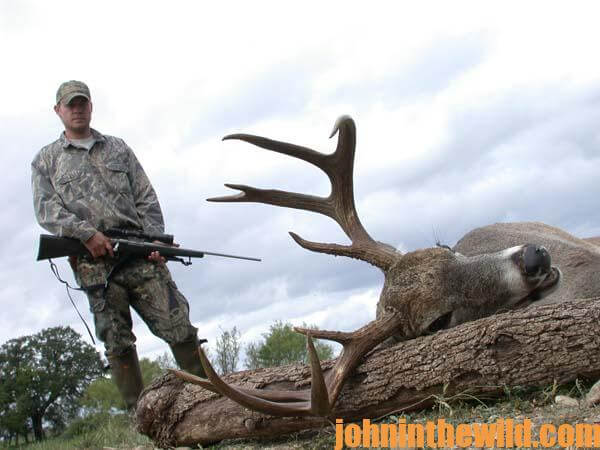 To get John E. Phillips’ Kindle eBooks and print books on hunting deer, “How to Hunt and Take Big Buck Deer on Small Properties,” “How to Hunt Deer Up Close: With Bows, Rifles, Muzzleloaders and Crossbows,” “PhD Whitetails: How to Hunt and Take the Smartest Deer on Any Property,” “How to Take Monster Bucks,” “How to Hunt Deer Like a Pro,” and “Bowhunting Deer: Mossy Oak Pros Know Bucks and Bows,” or to prepare venison, “Deer & Fixings,” click here.
To get John E. Phillips’ Kindle eBooks and print books on hunting deer, “How to Hunt and Take Big Buck Deer on Small Properties,” “How to Hunt Deer Up Close: With Bows, Rifles, Muzzleloaders and Crossbows,” “PhD Whitetails: How to Hunt and Take the Smartest Deer on Any Property,” “How to Take Monster Bucks,” “How to Hunt Deer Like a Pro,” and “Bowhunting Deer: Mossy Oak Pros Know Bucks and Bows,” or to prepare venison, “Deer & Fixings,” click here.
For information on making jerky from your deer to provide a protein-rich snack, you can download a free book from https://johninthewild.com/free-books.

